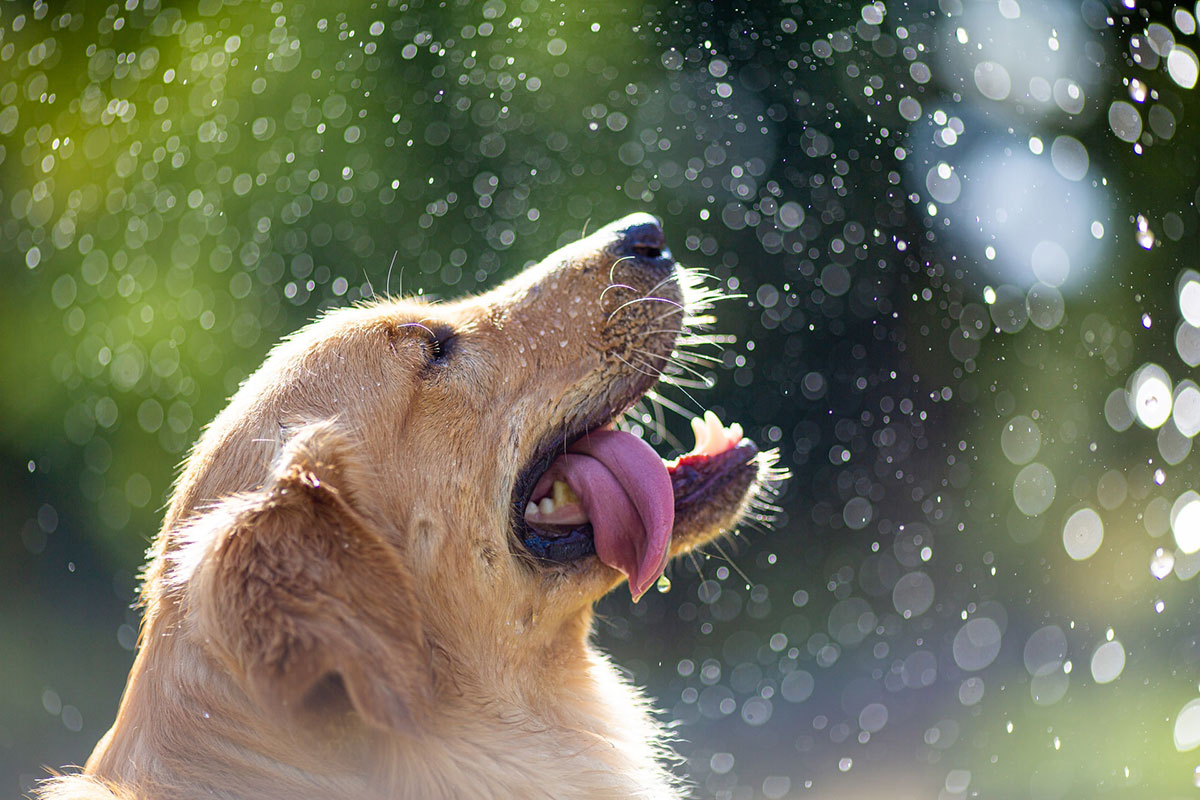Dog owners often face the challenge of boredom barking. This issue arises when dogs lack stimulation and exercise for dogs. Without enough physical and mental activity, dogs may bark out of frustration or boredom.
Offering the right amount and type of dog exercise can help a lot. Different breeds have different needs. Activities like chasing a ball, flying disc, or interactive games can cut down on dog barking caused by boredom.
Understanding and tackling the cause of barking can make a big difference. It helps create a more balanced and peaceful home for dogs.
Understanding Boredom-Related Barking in Dogs
Recognizing the signs of boredom barking is the first step towards resolving the issue. Boredom barking is a common problem faced by dog owners. It stems from a lack of mental and physical stimulation.
Common Behavioral Signs of Boredom
Common Behavioral Signs of Boredom
Dogs showing boredom may act out in many ways. They might be destructive, pace around, or bark too much. These behaviors show they need more to do.
Differentiating from Other Types of Barking
It’s important to tell boredom barking apart from other kinds, like alert or anxiety barking. Knowing the barking’s context and traits helps figure out why it happens.

| Type of Barking | Characteristics | Cause |
|---|---|---|
| Boredom Barking | Repetitive, monotonous | Lack of stimulation |
| Alert Barking | Loud, sharp | External stimuli |
| Anxiety Barking | High-pitched, frantic | Stress or anxiety |
By understanding these differences, dog owners can start to solve their dog’s barking problem.
The Connection Between Physical Activity and Barking Behavior
It’s important for dog owners to know how exercise affects barking. Regular physical activity tires dogs and keeps their minds sharp. This is good for their happiness and health.
The Role of Endorphins in Exercise
Exercise makes dogs feel good by releasing endorphins. These are like natural painkillers that lift their mood. They help dogs feel less stressed and anxious, which can make them bark less.
Tired Dogs vs. Mentally Stimulated Dogs
Being tired is good, but so is being mentally active. Dogs that are both tired and mentally sharp bark less. This is because they’re not bored.
| Aspect | Physical Activity | Mental Stimulation |
|---|---|---|
| Effect on Barking | Reduces barking by tiring the dog physically | Reduces barking by engaging the dog’s mind |
| Role of Endorphins | Endorphins released during exercise improve mood | Mental stimulation can reduce stress and anxiety |

To cut down on barking, dogs need enough exercise and mental play. Knowing how exercise affects barking helps owners create a quieter home for their pets.
Exercise Requirements To Minimize Boredom Related Barking
The secret to stopping boredom barking is knowing your dog’s exercise needs. Each breed is different, based on size, energy, and purpose.
Dogs need both physical and mental play to stay happy. Without enough exercise, they might bark too much or get destructive. So, it’s important to create an exercise plan that fits your dog’s needs.

Small dogs, like Chihuahuas and Poodles, don’t need as much exercise as big dogs. But they still need daily walks and playtime. For tips on managing small breed barking, check out our guide on stopping dog barking.
Medium Breeds
Medium breeds, like Cocker Spaniels and Beagles, need a bit of everything. They do well with short walks and playtime each day. Activities like fetch or agility training are great for them too.
Large and Giant Breeds
Big dogs, like German Shepherds and Great Danes, need lots of exercise. They need longer walks and more active play. Running or hiking is perfect for these energetic dogs.
Knowing and meeting your dog’s breed-specific exercise needs can really help with boredom barking. The right exercise keeps your dog happy and busy, reducing barking.
Breed-Specific Exercise Needs
To tackle boredom barking, knowing your dog’s exercise needs is key. Different breeds were bred for various tasks. Their exercise needs reflect these origins.
Working and Herding Breeds
Working and herding breeds, like German Shepherds and Border Collies, are smart, strong, and energetic. They need regular, rigorous exercise to stay active and sharp. Activities like agility, obedience, and herding are great for them.
- Daily runs or long walks
- Agility training sessions
- Mental stimulation through puzzle toys
Sporting and Hunting Breeds
Sporting and hunting breeds, including Labradors and Pointers, are full of energy and love to move. They thrive on extensive exercise routines like running, swimming, and retrieving games.
- Regular swimming sessions
- Retrieving games in open spaces
- Long, brisk walks
Knowing your dog’s exercise needs is vital for a good exercise plan. Tailoring activities to their breed can reduce boredom barking. It ensures they’re happy and healthy.

Remember, while breed tendencies guide us, each dog is unique. Watch how your dog reacts to different activities. Adjust their routine to meet their individual needs for their best health.
Effective Physical Exercise Options
Physical exercise is key for a dog’s daily life. It keeps them healthy and happy. It also makes your bond with your dog stronger.
There are many dog sports and activities for your dog. These range from simple walks to complex dog sports like flyball and agility training.
Flyball is a fun dog sport. Dogs race to catch balls from a flyball box. It’s great for their heart and agility.
Dock diving is thrilling. Dogs jump from a dock into water, competing in distance or height. It’s perfect for water-loving dogs and a great workout.
Agility Courses and Rally Obedience
Agility courses test dogs through obstacles like tunnels and jumps. It’s a fun way to keep them physically and mentally sharp.
Rally obedience mixes obedience training with a fun course. It’s a great way to improve obedience while exercising your dog.
Other great physical exercise options for dogs include:
- Hiking and backpacking
- Swimming
- Fetch and frisbee
- Jogging and running
Adding these activities to your dog’s routine boosts their health and cuts down on boredom barking. Make sure the activities fit your dog’s age, breed, and health.
Mental Stimulation: The Other Half of the Exercise Equation
Physical exercise is key for dogs, but so is mental stimulation to stop barking due to boredom. Dogs are smart and need to be kept busy to avoid stress and boredom.
Mental stimulation can exhaust your dog’s mind, just like exercise does for their body. It makes them less likely to bark too much.
Hide and seek is a great way to keep your dog’s mind sharp. Hide treats or toys around the house or yard. This makes your dog use their nose and solve problems to find them.
Scent Trails and Tracking
Scent trails and tracking games use your dog’s sense of smell. They’re fun and mentally challenging. You can make a scent trail by laying out treats or scents for your dog to follow.
Adding mental games to your dog’s daily life can cut down on barking. It also makes them happier and healthier.
Creating a Balanced Exercise Routine for Your Dog
Dogs love routine, and a good exercise plan can stop boredom barking. A daily routine with both physical and mental activities keeps your dog happy and quiet.
Every dog is different, so their exercise plan should match their age, breed, and needs. It’s not just about moving around; keeping their mind busy is key to stopping boredom barking.
Morning Exercise Routines
Starting the day with exercise sets a good mood for your dog. Morning walks or jogs get their blood flowing and energy in check. Adding playtime activities like fetch or tug-of-war makes mornings fun.
Evening Exercise Strategies
Evening routines should be calm to help your dog relax before bed. Leisurely walks or gentle play calm their mind and body. Scent work or interactive puzzle toys offer mental fun without too much effort.
By mixing morning and evening exercises, you create a balanced routine. This meets their physical and mental needs, reducing boredom barking and making your home more peaceful.
Indoor Exercise Solutions for Apartment Dwellers
You don’t need a backyard to give your dog a good workout. Living in an apartment doesn’t mean you can’t provide your dog with the exercise they need.
Indoor exercise for dogs is just as good as outdoor activities. Playing hide-and-seek is a simple way to start. Hide treats or toys around the apartment for your dog to find. This game is great for both physical and mental exercise.
Stair climbing is another good indoor activity. If allowed, running up and down stairs is a great cardio workout for your dog. High-energy breeds can enjoy apartment-friendly exercises like jumping jacks or indoor fetch.
Puzzle toys are great for dogs that love to play. Fill these toys with treats to keep your dog busy for a long time. It’s a great way to keep their mind active and prevent boredom barking.
Try mixing up the activities to keep things interesting. You can set up a mini obstacle course using household items. This is not only a physical workout but also a mental challenge for your dog.
By using these indoor exercise solutions, you can prevent boredom barking. You’ll keep your dog happy and healthy, even in a small apartment.
Conclusion: A Well-Exercised Dog is a Quiet Neighbor
A happy dog is also a quieter one. Regular exercise and mental stimulation are key. They help reduce barking and improve a dog’s life.
Exercise does more than just keep dogs fit. It also lowers stress and anxiety. By adding physical and mental activities to their day, owners can cut down on barking. This makes for a better living space for everyone.
Creating a balanced exercise plan for your dog can make a big difference. It helps them behave better and bark less. This simple step benefits both dog owners and their neighbors.






